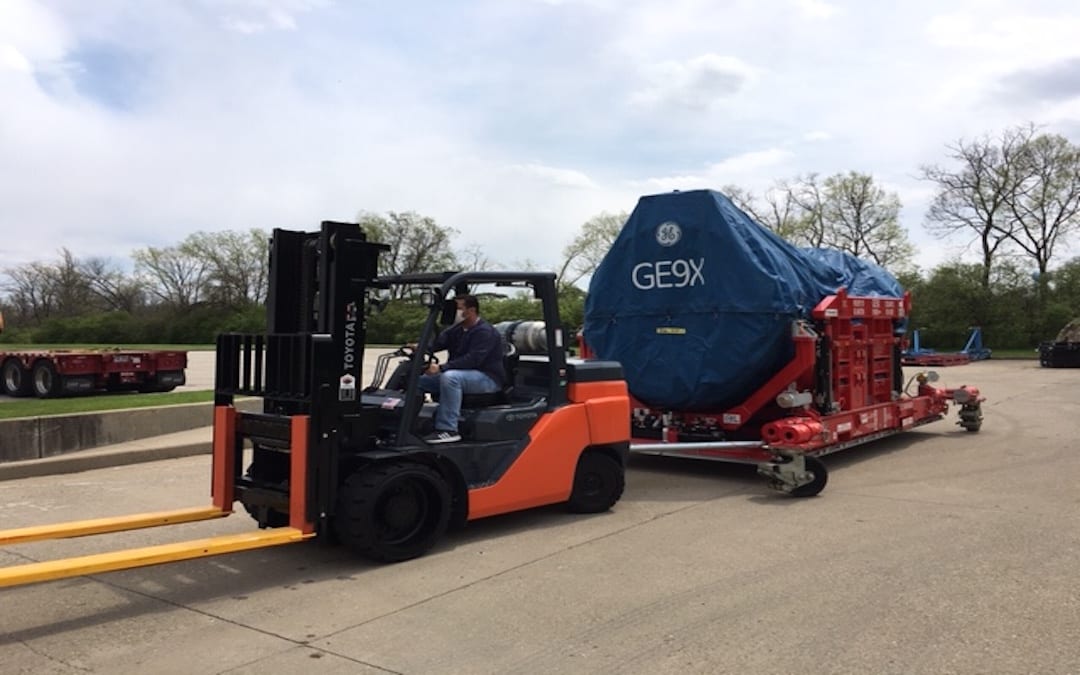By: Maureen Kerr, Chair of the Education Department at the Smithsonian’s National Air and Space Museum
________________________
The celebration of National Engineers Week is an opportune time to reflect on the role of engineering in STEM (Science, Technology, Engineering, and Mathematics) education. I am fortunate to work as an educator at the Smithsonian’s National Air and Space Museum where the exhibitions and collections surround me with engineering innovations from early flight through current planetary exploration, and where industry leaders, such as GE Aviation, partner with the Museum to support STEM education.
INSPIRATION
 The 1903 Wright Flyer in the Wright Brothers & The Invention of the Aerial Age exhibition
The 1903 Wright Flyer in the Wright Brothers & The Invention of the Aerial Age exhibition
As an educator at the Museum, I frequently hear from scientists, engineers, astronauts and other STEM professionals that a visit to the Museum as a child inspired them to choose their career path.
One of the most inspirational exhibitions, The Wright Brothers & The Invention of the Aerial Age tells the story of the 1903 Wright Flyer, the world's first successful airplane. The exhibition shows how the Wright brothers built a foundation for aeronautical engineering. A key to their success was the three-axis control system, which featured wing-warping for lateral balance, a moveable rudder, and an elevator for pitch control. Just as engineers do today, the Wright brothers refined their designs based on data gathered by testing aircraft in flight. On December 17, 1903, at Kitty Hawk, North Carolina, the Wright Flyer became the first powered, heavier-than-air machine to achieve controlled, sustained flight with a pilot aboard, a major accomplishment that changed the world. The Wright brothers’ story is just one among many inspiring accomplishments in engineering found in the National Air and Space Museum.
ENGAGEMENT
 An Explainer (red shirt on the left) assists visitors with wind tunnel testing of a paper airplane design
An Explainer (red shirt on the left) assists visitors with wind tunnel testing of a paper airplane design
Inspiration is an excellent start for Museum visitors, but as an educator my goal is engagement in the service of learning.
Our secret weapons for audience engagement are the Explainers. Explainers are highly motivated and enthusiastic high school and college students who work part time at the Museum. The human interaction that Explainers bring to the Museum’s exhibitions and collections help visitors appreciate the significance of the artifacts, which are often marvels of engineering. Explainers can be found throughout the Museum. They facilitate learning on Discovery Stations with space toilets, airfoils, and other objects from the teaching collection. Explainers carry “pocket science” to captivate visitors wherever they are. In the Design Hangar, as pictured above, Explainers help guide visitors through an iterative design process. As much as Explainers give to the Museum visitor, they also receive a unique work experience with opportunities for learning and leadership. With support from GE Aviation, the Explainers Program will continue to thrive at the National Air and Space Museum’s building in Washington, DC and expand to the Steven F. Udvar Hazy Center in Chantilly, VA, as well as reach beyond the walls of the Museum.
BEYOND THE MUSEUM
 Explainers prepare to connect with a classroom in Cincinnati Public Schools
Explainers prepare to connect with a classroom in Cincinnati Public Schools
Although the National Air and Space Museum receives millions of visitors in person each year, we still want to serve those who cannot visit our building.
Fortunately, technology allows us to do this through websites and webcasts that touch many more people. One unique program, sponsored by GE Aviation, allows us to engage students in the classroom. This video conference experience combines the best of classroom learning with the best of Museum education. Students see real-world applications for the topics they are studying in the classroom. When the students are studying a topic, such as chemistry, our experts can share how they use chemistry to conserve artifacts in the Museum. In the photo above, the Explainers are getting ready to discuss spacesuit conservation. The students share their classroom projects with the Explainers, which in this case would be a light strip activity where students measure the impact of sunlight on dyes found in construction paper. The Explainers critique the students’ findings and show them how their work is grounded in the work of professionals in the field. Through demonstrations and inquiry the Explainers enrich what the students are studying in the classroom. This exceptional video conference program would not have been possible without an amazing collaboration involving GE Aviation, Cincinnati Public Schools and the National Air and Space Museum. For almost two years the partners worked together to define, prototype and evaluate the program. The result is an outstanding program where students find inspiration to persevere in their studies and perhaps pursue a career in a STEM field.
Visit the Smithsonian National Air and Space Museum online to learn more or watch the video below to hear directly from a student that has been forever impacted by STEM education.
________________________________________________________________________
Maureen Kerr is Chair of the Education Department at the Smithsonian’s National Air and Space Museum, which includes locations in Washington, DC and Chantilly, VA. She oversees educational programming for one of the most-visited museums in the world. Maureen came to the Museum in 1994 with experience as a classroom science teacher and manager of national science education projects.






